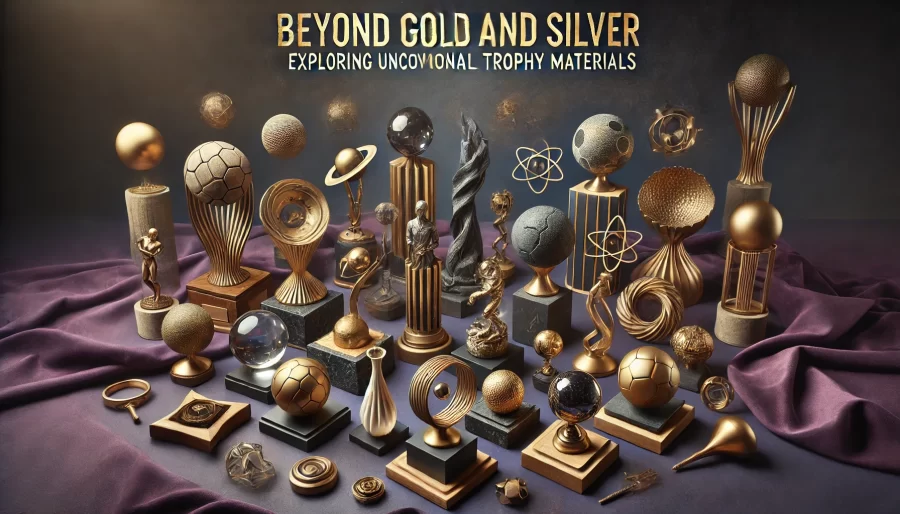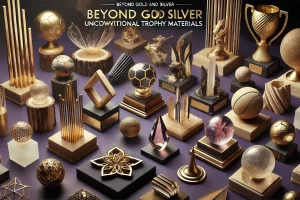Trophies are synonymous with recognition, achievement, and excellence. Traditionally, trophies have been crafted from materials like gold, silver, bronze, and crystal, symbolizing prestige and honor. However, in today’s creative landscape, there’s a growing trend of exploring unconventional materials to craft unique and innovative trophies that push the boundaries of traditional designs. In this blog, we’ll delve into the world of unconventional trophy materials and discover the artistic and symbolic possibilities they offer.
Wood: Wood has emerged as a popular choice for crafting trophies due to its natural beauty, versatility, and sustainability. From elegant hardwoods like mahogany and oak to more rustic options like reclaimed wood, trophies made from wood exude warmth and authenticity. Wood trophies can be intricately carved, engraved, or laser-cut to showcase intricate details and personalized touches. They are not only visually appealing but also environmentally friendly, making them a meaningful choice for eco-conscious organizations.
Acrylic and Plexiglass: Acrylic and plexiglass offer a modern and sleek alternative to traditional trophy materials. These transparent or translucent materials can be molded, shaped, and colored to create striking trophy designs. The smooth surfaces of acrylic and plexiglass trophies provide ample space for engraving, etching, or printing logos, text, and graphics. Their contemporary aesthetic and customizable nature make them ideal for recognizing achievements in tech, design, and innovation-focused industries.
Resin: Resin trophies have gained popularity for their versatility and durability. Resin can be molded into intricate shapes, textures, and colors, allowing for creative and unique trophy designs. Whether resembling sculptures, abstract art pieces, or thematic objects related to the achievement being recognized, resin trophies offer endless possibilities for customization. They can also incorporate other materials like metal, wood, or glass to add depth and visual interest.
Recycled Materials: Embracing sustainability and eco-friendliness, trophies made from recycled materials have become a meaningful choice for organizations committed to environmental stewardship. Recycled glass, plastic, metal, and paper can be creatively repurposed to craft distinctive trophies with a story of sustainability behind them. These trophies not only honor achievements but also promote awareness of environmental responsibility and conservation efforts.
Ceramics and Porcelain: Ceramics and porcelain offer a touch of elegance and sophistication to trophy designs. These materials can be molded, glazed, and fired to create delicate yet durable trophies. Ceramics and porcelain trophies often feature intricate patterns, textures, and hand-painted details, making each trophy a unique work of art. They are particularly well-suited for recognizing achievements in arts, culture, and creative industries.
Mixed Media: Combining multiple materials in trophy design opens up endless creative possibilities. Mixed media trophies may feature combinations of metal, wood, glass, fabric, or other unconventional materials, blending textures, colors, and finishes for visually stunning results. These trophies can be tailored to reflect specific themes, industries, or achievements, adding layers of meaning and symbolism to the recognition process.
Exploring unconventional trophy materials offers a wealth of artistic, symbolic, and sustainable opportunities. From wood and acrylic to resin, recycled materials, ceramics, porcelain, and mixed media, each material brings its unique aesthetic and character to trophy designs. By embracing unconventional materials, organizations can create memorable, meaningful, and visually captivating trophies that celebrate achievements while reflecting values of innovation, sustainability, and creativity.





Leave a Reply
Your email is safe with us.